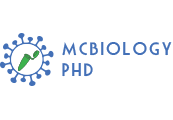Education and training
1981 Degree in Physics, University of Rome La Sapienza Thesis with prof. Mario Ageno in Biophysics
1981-1984 fellow with Giuseppe Macino, working on gene arrangement and transcription regulation in Neurospora crassa mitochondria (molecular biology)
1986-1988 EMBL post-doc with Gianni Cesareni, working on RNA-protein interaction in the ColE1 system (molecular biology)
1991-1993 guest scientist at IRBM with Anna Tramontano, developing a docking program, i.e. a software for the reconstruction of protein complexes starting from the 3d coordinates of their separated components (structural bioinformatics)
Employment
1984-1999 Research scientist, Dept of Biology, University of Rome Tor Vergata
1997-present Group leader in the Dept of Biology, University of Rome, Tor Vergata
1998-present Director of the Centre for Molecular Bioinformatics in the Dept of Biology, Univ of Rome Tor Vergata
2000-2004 Associate professor, Dept of Biology, University of Rome Tor Vergata
2005-present Full professor of Bioinformatics and Molecular Biology, Dept of Biology, University of Rome Tor Vergata
2004-2013 Responsible of the Master Degree in Bioinformatics
Teaching
2002-present Bioinformatics in the Degree in Biological Sciences (6 cfu)
2013-present Molecular Biology in the Degree in Biological Sciences (8 cfu)
Honours and memberships
1984-present member of SIBBM (Italian Society of Biophysics and Moleculare Biology)
2003-present Founder member of BITS (Bioinformatics Italian Society)
2000-2004 Member of the European Science Foundation Programme in Functional Genomics
2009-2016 President of the Italian Society of Bioinformatics (BITS, http://bioinformatics.it)
2013-present Member of the PDBe Scientific Advisory Board (EBI)
2014-present Member of the INGM (National Institute of Molecular Genetics) Scientific Advisory Committee
2014-present Coordinator of the Master Degree in Bioinformatics in the University of Rome Tor Vergata
2016-present Honorary President of the Italian Society of Bioinformatics
Funding
2001-2003 AIRC Associazione Italiana Ricerca sul Cancro
2004-2006 AIRC Associazione Italiana Ricerca sul Cancro
2007-2009 AIRC Associazione Italiana Ricerca sul Cancro
2010-2013 AIRC Associazione Italiana Ricerca sul Cancro
2016-2019 AIRC Associazione Italiana Ricerca sul Cancro
2012-2014 EPIGEN Progetto Bandiera Epigenomica
2016-2018 EPIGEN Progetto Bandiera Epigenomica
2003-2005 FIRB
2001-2003 FIRB
2009-2011 PRIN
2012-2014 PRIN
2004-2006 TELETHON
2006-2008 TELETHON
2002-2004 GENEFUN
2004-2006 FP6 European Project ELM
2009-2011 FP7 European Project LEISHDRUG
Research field
The groups is interested in developing computational tools for the analysis of biological data. At the moment we are working in two different fields: the analysis of RNA sequence and structure for understanding the functional content of the ncRNA world and the study of the specificity of eukaryotic kinases, that are so important in the regulation of the cell cycle and involved in cancer and the mechanisms of drug resistance. More details about this two main projects are given below.
RNA secondary structure: a key for molecular function: In recent years, data are being collected on long non coding RNA (lncRNA) genes, that more than double the Ensembl human gene set. Such RNAs are actively transcribed and processed in cells, but most of them are not yet associated to a known function. New tools for RNA analysis are badly needed, since sequence comparison is a fundamental tool for functional annotation, but often fails when comparing RNA sequence sharing less than 60% sequence identity. It is possible that important functional information is encoded into RNA strucure, but experimental data on RNA 3D structure is very sparse and poor. RNA secondary structure has pros and cons: it can be predicted by computational methods, and therefore can be calculated for all RNA molecules of interest, but the reliability of the prediction is not yet entirely satisfactory. We defined an alphabet for the description of RNA secondary structure, and therefore we can translate a secondary structure into a sequence of characters. Thanks to this alphabet, we could compute a substitution matrix of secondary structure elements, with the rates of variation of structural elements in functionally related RNAs. The alphabet and the matrix were used for building tools for the global and local comparison of RNAs with very low computational costs.
A computational analysis of drug resistance mechanisms in cancer: Drugs designed to bind specific targets fostered dramatic improvements in the treatment of human tumors. However virtually all patients develop resistance to targeted therapies. Most of the chemotherapeutic agents inhibit kinases that transduce signals using survival pathways, such as PI3K-AKT and MAPK pathways, that have common downstream effectors. As a consequence, drug resistance can be the result of survival pathway re-activation via genetic or non-genetic mechanisms.
Hypothesis – Among the mechanisms that induce drug resistance via survival pathways reactivation, increased levels of receptor tyrosine kinase ligands can rescue oncogene signaling, which is inhibited by drugs. The sources for ligands production can be autocrine, paracrine or systemic. Several experimental evidences show that autocrine signaling is implicated in mechanisms of resistance to several kinase inhibitors.
Experimental Design – We are analyzing a comprehensive dataset of pharmacological data, in combination with genomic, and transcriptomic data, to build networks of cell-binding. Such networks will be used for analyzing the sensing properties of the tumor cell lines, and networks of cell-production, that will be used for characterizing the secreting properties of the tumor cell lines.
Publications (last 10 years max 15)
- Pietrosanto M, Adinolfi M, Casula R, Ausiello G, Ferrè F, Helmer-Citterich M. BEAM web server: A tool for structural RNA motif discovery. Bioinformatics. 2017 Oct 31. doi: 10.1093/bioinformatics/btx704. [Epub ahead of print] PubMed PMID: 29095974.
- Pietrosanto M, Mattei E, Helmer-Citterich M, Ferrè F. A novel method for the identification of conserved structural patterns in RNA: From small scale to high-throughput applications. Nucleic Acids Res. 2016 Oct 14;44(18):8600-8609. Epub 2016 Aug 31. PubMed PMID: 27580722; PubMed Central PMCID: PMC5062999.
- Mongiardi MP, Savino M, Falchetti ML, Illi B, Bozzo F, Valle C, Helmer-Citterich M, Ferrè F, Nasi S, Levi A. c-MYC inhibition impairs hypoxia response in glioblastoma multiforme. Oncotarget. 2016 May 31;7(22):33257-71. doi: 10.18632/oncotarget.8921. PubMed PMID: 27119353; PubMed Central PMCID: PMC5078092.
- Creixell P, Schoof EM, Simpson CD, Longden J, Miller CJ, Lou HJ, Perryman L, Cox TR, Zivanovic N, Palmeri A, Wesolowska-Andersen A, Helmer-Citterich M, Ferkinghoff-Borg J, Itamochi H, Bodenmiller B, Erler JT, Turk BE, Linding R. Kinome-wide decoding of network-attacking mutations rewiring cancer signaling. Cell. 2015 Sep 24;163(1):202-17. doi: 10.1016/j.cell.2015.08.056. Epub 2015 Sep 17. PubMed PMID: 26388441; PubMed Central PMCID: PMC4644236.
- Mattei E, Pietrosanto M, Ferrè F, Helmer-Citterich M. Web-Beagle: a web server for the alignment of RNA secondary structures. Nucleic Acids Res. 2015 Jul 1;43(W1):W493-7. doi: 10.1093/nar/gkv489. Epub 2015 May 14. PubMed PMID: 25977293; PubMed Central PMCID: PMC4489221.
- Palmeri A, Ferrè F, Helmer-Citterich M. Exploiting holistic approaches to model specificity in protein phosphorylation. Front Genet. 2014 Sep 30;5:315. doi: 10.3389/fgene.2014.00315. eCollection 2014. Review. PubMed PMID: 25324856; PubMed Central PMCID: PMC4179730.
- Palmeri A, Ausiello G, Ferrè F, Helmer-Citterich M, Gherardini PF. A Proteome-wide Domain-centric Perspective on Protein Phosphorylation. Mol Cell Proteomics. 2014 Sep;13(9):2198-212. doi: 10.1074/mcp.M114.039990. Epub 2014 May 15. PubMed PMID: 24830415; PubMed Central PMCID: PMC4159644.
- Mattei E, Ausiello G, Ferrè F, Helmer-Citterich M. A novel approach to represent and compare RNA secondary structures. Nucleic Acids Res. 2014 Jun;42(10):6146-57. doi: 10.1093/nar/gku283. Epub 2014 Apr 21. PubMed PMID: 24753415; PubMed Central PMCID: PMC4041456.
- Lanni S, Goracci M, Borrelli L, Mancano G, Chiurazzi P, Moscato U, Ferrè F, Helmer-Citterich M, Tabolacci E, Neri G. Role of CTCF protein in regulating FMR1 locus transcription. PLoS Genet. 2013;9(7):e1003601. doi: 10.1371/journal.pgen.1003601. Epub 2013 Jul 18. PubMed PMID: 23874213; PubMed Central PMCID: PMC3715420.
- Gherardini PF, Helmer-Citterich M. Experimental and computational methods for the analysis and modeling of signaling networks. N Biotechnol. 2013 Mar 25;30(3):327-32. doi: 10.1016/j.nbt.2012.11.007. Epub 2012 Nov 16. Review. PubMed PMID: 23165097.
- Minguez P, Parca L, Diella F, Mende DR, Kumar R, Helmer-Citterich M, Gavin AC, van Noort V, Bork P. Deciphering a global network of functionally associated post-translational modifications. Mol Syst Biol. 2012 Jul 17;8:599. doi: 10.1038/msb.2012.31. PubMed PMID: 22806145; PubMed Central PMCID: PMC3421446.
- Palmeri A, Gherardini PF, Tsigankov P, Ausiello G, Späth GF, Zilberstein D, Helmer-Citterich M. PhosTryp: a phosphorylation site predictor specific for parasitic protozoa of the family trypanosomatidae. BMC Genomics. 2011 Dec 19;12:614. doi: 10.1186/1471-2164-12-614. PubMed PMID: 22182631; PubMed Central PMCID: PMC3285042.
- Parca L, Mangone I, Gherardini PF, Ausiello G, Helmer-Citterich M. Phosfinder: a web server for the identification of phosphate-binding sites on protein structures. Nucleic Acids Res. 2011 Jul;39(Web Server issue):W278-82. doi: 10.1093/nar/gkr389. Epub 2011 May 26. PubMed PMID: 21622655; PubMed Central PMCID: PMC3125782.
- Parca L, Gherardini PF, Helmer-Citterich M, Ausiello G. Phosphate binding sites identification in protein structures. Nucleic Acids Res. 2011 Mar;39(4):1231-42. doi: 10.1093/nar/gkq987. Epub 2010 Oct 24. PubMed PMID: 20974634; PubMed Central PMCID: PMC3045618.
- Gherardini PF, Ausiello G, Russell RB, Helmer-Citterich M. Modular architecture of nucleotide-binding pockets. Nucleic Acids Res. 2010 Jun;38(11):3809-16. doi: 10.1093/nar/gkq090. Epub 2010 Feb 25. PubMed PMID: 20185567; PubMed Central PMCID: PMC2887960.


